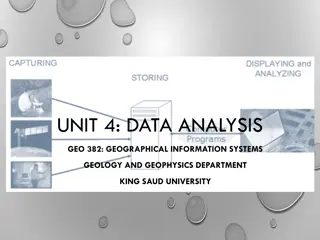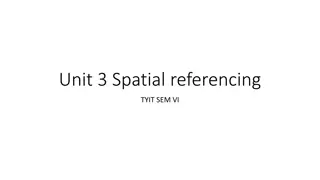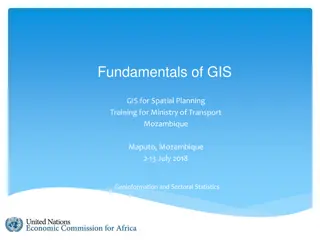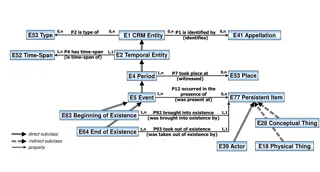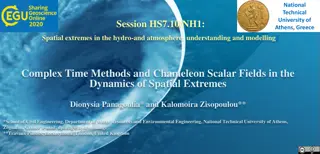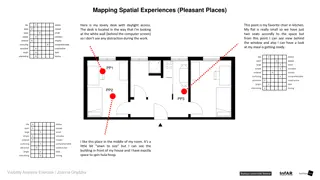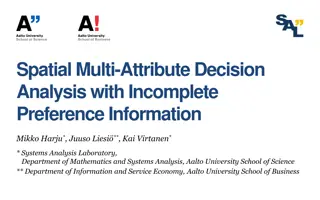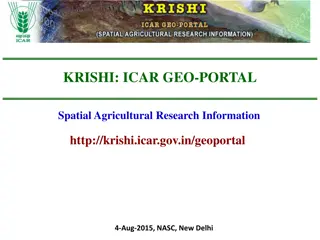Understanding Spatial Autocorrelation in Geostatistical Analysis
Explore the concept of spatial autocorrelation, its implications in geostatistical analysis, and the importance of detecting and interpreting it correctly. Learn about auto-correlation, signal components, correlation significance, and measuring autocorrelation using tools like Moran's I. Gain insights into spatial patterns, clusters, and the impact of spatial autocorrelation on spatial interpolation processes. Dive into the First Law of Geography and its relevance in understanding spatial relationships.
Download Presentation

Please find below an Image/Link to download the presentation.
The content on the website is provided AS IS for your information and personal use only. It may not be sold, licensed, or shared on other websites without obtaining consent from the author. Download presentation by click this link. If you encounter any issues during the download, it is possible that the publisher has removed the file from their server.
E N D
Presentation Transcript
Analysis Tools Analysis Tools Vector Analysis Spatial Analyst Raster Analysis Geostatistical Analyst Interpolation Spatial Statistics Patterns Clusters namNm15
Auto-Correlation Auto self Correlation - related namNm15 Does this signal have auto-correlation?
Signal Components Random Component Uniform namNm15
Is Correlation Bad? Most statisticians see correlation as bad because it can lead to results that are misinterpreted Spatial auto-correlation can be bad for the same reason so we must detect it Without spatial auto-correlation, we should not be doing spatial interpolation namNm15
First Law of Geography "Everything is related to everything else, but near things are more related than distant things. Waldo Tobler (1970) "A computer movie simulating urban growth in the Detroit region". Economic Geography namNm15
Measuring Autocorrelation Moran s I Spatial Statistics Tools -> Analyzing Patterns -> Spatial Autocorrelation (Moran s I) 0 ~ Random 1 = Perfect Correlation -1 = Perfect Dispersion (pattern) namNm15 ArcGIS Help
Morans I Results 0.8 = Spatial Autocorrelation -0.05 = Random -1 = Opposite of autocorrelation namNm15
Morans I If the ??and ??in the numerator vary in the same way from the mean (positively or negatively), the numerator will be positive. If ??and ?? vary in opposite ways from the mean, the numerator will be negative. namNm15
Morans I Weights namNm15
Morans I namNm15
Spatial Autocorrelation Game Northern Kentucky University http://www.nku.edu/~longa/cgi-bin/cgi-tcl- examples/generic/SA/SA.cgi namNm15
Other measures Geary s C Inversely related to Moran s I More sensitive to local spatial correlation namNm15








